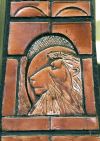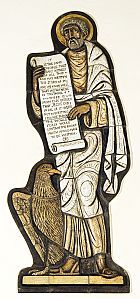GOSPEL READING

THE GOSPEL OF MARK
Welcome to our reading of the Gospel of Mark.
The Gospel of Mark
The Gospel of Mark is generally regarded as the first of the gospels to be written.
One reason for this is that Mark is the shortest Gospel and so we would expect later writings to become longer. Also, as we will be seeing, both its style and its message could be described as rough. Both style and content are smoothed out in the other Gospels, again that is to be expected if they were written later.
However, for me the most important reason for taking Mark as the earliest Gospel is that Mark presents us with a concise story about Jesus. This is a story which has been taken over by both Matthew and Luke and which each has expanded and adapted to their purposes.
Our Aim
Our aim is to read the Gospel of Mark as his story and presentation of the good news of Jesus. We will begin at the beginning and read steadily right through the Gospel. We need to capture a sense of the gospel as an exciting fast moving story through which we can discover Jesus, the man who is also the Son of God.
As I mentioned on the welcome page, our aim with Gospel Reading is practical: I hope to help you to read well and so to discover the Gospel for yourself. I will be trying to help you to build up an experience of reading so that you are able to approach the gospel story with the right questions in mind. This aim is not academic in itself - though the guidance will I hope have a sound academic basis.
My approach will be to introduce a reading of the passage and suggest questions for you to consider during your reading. I then give you a detailed reply, my response, on another page. You may have seen my sample earlier when we looked at the scene of Jesus walking on the water as told by Mark and Matthew.
Try to make more time available during the first few weeks of reading when there will be more background to cover. After a while, an hour each week ought to be ample time.
Always of course have your Bible with you. Part of our reading will be looking up references. This will help us to get used to thumbing through the Bible and getting to know our way around. The Bible itself is often the best interpreter of the Bible.
Whilst one Bible must always be your primary Bible, it can be very useful to look at others and compare translations. All translations have their strengths and their weaknesses because translations are already interpretations.
Approach to the Gospel
Our first step will be an Orientation, an overview of the Gospel. There are many signs that the evangelist planned his story carefully. A sound reading needs to fit into the evangelist's framework. To some extent, most of us are already familiar (or think we are familiar) with the Gospel. A first time reading would be a very different experience.
The Sunday Gospel
In Advent 2017, we began cycle B of the Sunday Gospel readings; this is the year when the Gospel of Mark is read. As we read the Gospel, we will also be looking at the Sunday presentation of the Gospel.
A feature of our Sunday readings in Ordinary Time is that the Old Testament reading is chosen to accompany the Gospel. Sometimes the choice is a success, at others less so. Looking at these readings as we proceed will give us a useful background to our reading of the Gospel.
Navigation
Navigation on this site will be somewhat restricted: I would like you to keep to the task in hand before you look for my response.Navigation is primarily vertical. That is easy because the site is so shallow. If you wish to move elsewhere, the route will be to go as far up as necessary and then go back down again. All pages will have a link to the Home Page and to the opening page of the Gospel. Response pages will always return you to the page from which you came.
